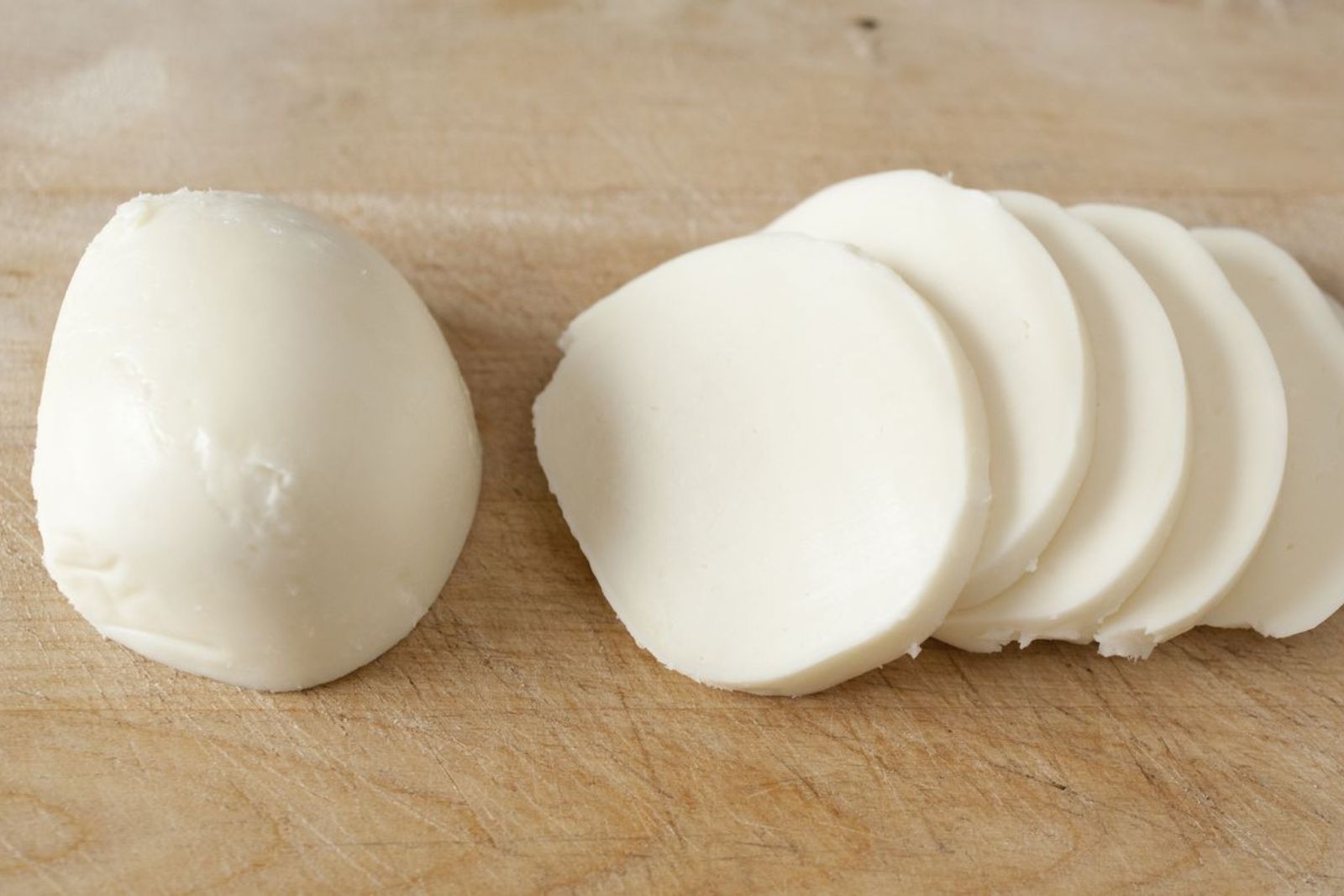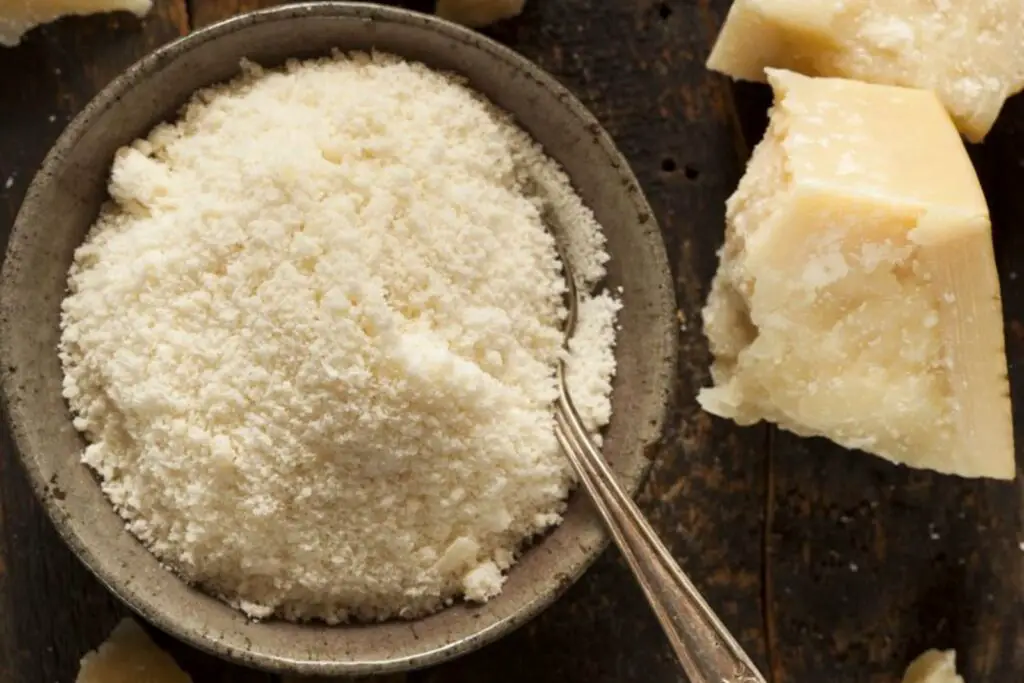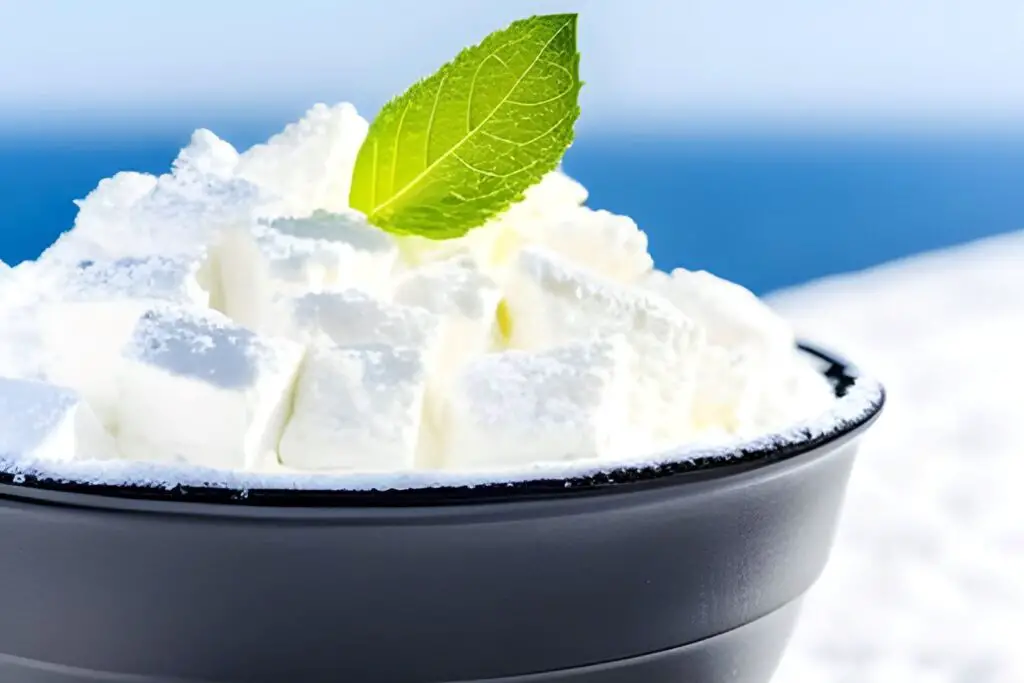
Mozzarella cheese is a beloved dairy product known for its creamy texture and mild flavor. Whether you’ve bought mozzarella in bulk or have leftover portions, freezing it can help extend its shelf life and ensure it remains fresh for future use. Freezing mozzarella cheese is a simple process that requires some basic preparation to maintain its original taste and consistency. By following these easy steps, you can freeze mozzarella cheese effectively and enjoy it in your favorite dishes at any time of the year.
Here’s a step-by-step guide on how to freeze mozzarella cheese:
Step 1: Choose the right mozzarella cheese
When freezing mozzarella cheese, the first and crucial step is to select the right type of cheese. Opting for fresh and high-quality mozzarella is essential to ensure the best possible results after freezing. Whether you have a block, shredded, or sliced mozzarella, the quality of the cheese will significantly impact its taste and texture when thawed.
Using fresh mozzarella that hasn’t surpassed its expiration date is essential because cheese that is close to or past its expiration may already have started to degrade in quality. Freezing won’t reverse the aging process, so it’s essential to begin with a product that’s in its prime.
Furthermore, it’s vital to ensure that the mozzarella cheese you’re planning to freeze has not been previously frozen. Repeated freezing and thawing can lead to significant changes in texture and compromise the overall quality of the cheese. While it’s safe to freeze fresh mozzarella once, doing so multiple times can negatively affect its smooth and creamy texture, resulting in a grainy or rubbery consistency.
The reason behind using the best quality mozzarella cheese for freezing is to preserve its original taste and maintain the desired texture upon thawing. Freezing can cause some moisture to be released from the cheese, potentially altering its mouthfeel. By starting with fresh and top-quality mozzarella, you can minimize these potential texture changes and ensure a more satisfying culinary experience when using the cheese later on.
Step 2: Prepare the mozzarella cheese
Once you have chosen the right mozzarella cheese for freezing, the next step is to prepare it for the freezing process. How you prepare the cheese will depend on the form of mozzarella you have: a large block, shredded, or sliced.
If you have a large block of mozzarella, it is advisable to divide it into smaller portions that align with your future usage needs. By doing this, you can avoid the need to thaw the entire block whenever you want to use the cheese. Thawing and refreezing mozzarella multiple times can lead to texture and flavor degradation, so portioning it beforehand helps you avoid unnecessary waste and preserve the cheese’s quality.
Dividing the mozzarella into smaller portions also makes it more convenient to work with in recipes that require specific amounts. For instance, if you often use mozzarella to top pizzas, dividing the block into individual portions will ensure you have the right amount on hand each time you want to make a pizza.
On the other hand, if you already have shredded or sliced mozzarella, you can skip this step as the cheese is already in a suitable form for direct freezing. Pre-shredded or pre-sliced mozzarella is often packaged in portions, making it easy to take out only the amount you need without additional preparation.
The objective of preparing the mozzarella cheese before freezing is to optimize its usability and minimize any potential quality issues during the freezing and thawing process. By dividing a large block into smaller portions, you can conveniently thaw only what you need, reducing the risk of unnecessary spoilage due to repeated thawing and refreezing. This way, you can enjoy the frozen mozzarella with minimal waste and ensure that each portion retains its desirable texture and taste when used in your culinary creations.
Can I freeze mozzarella cheese sticks or string cheese?
Yes, mozzarella cheese sticks or string cheese can be frozen. To do so, wrap each piece individually in plastic wrap or foil, and then place them in a freezer-safe container or bag. This method allows you to conveniently thaw only the amount you need at a time.
Step 3: Wrap the mozzarella
After preparing the mozzarella cheese for freezing, the next crucial step is to wrap it properly to protect it from freezer burn and maintain its freshness throughout its time in the freezer. Freezer burn occurs when moisture evaporates from the surface of the cheese, leaving it dehydrated and leading to changes in taste and texture. Proper wrapping will help prevent freezer burn and preserve the quality of the mozzarella.
To achieve this, tightly wrapping the mozzarella in either plastic wrap or aluminum foil is recommended. Both materials create a barrier that helps retain moisture and prevents air from coming into contact with the cheese, reducing the risk of freezer burn.
When wrapping the mozzarella, ensure there are no exposed areas or gaps in the wrapping. Even the tiniest openings can allow air to reach the cheese, leading to freezer burn. Make sure the entire surface of the mozzarella is covered securely.
Choosing between plastic wrap and aluminum foil is a matter of personal preference. Plastic wrap is flexible and adheres closely to the cheese’s surface, creating an airtight seal. On the other hand, aluminum foil provides a sturdy and protective layer that shields the cheese from air and light exposure.
In addition to preventing freezer burn, tightly wrapping the mozzarella also helps maintain the cheese’s flavor and prevents it from absorbing any unwanted odors from other foods in the freezer. This ensures that the mozzarella retains its original taste and does not develop any off-flavors during freezing.
Step 4: Place the mozzarella in a freezer-safe container
After tightly wrapping the mozzarella cheese, the next essential step is to store it properly in a freezer-safe container or a resealable plastic bag. Doing so provides an extra layer of protection for the cheese and helps maintain its quality during freezing.
Using a freezer-safe container is ideal because it is designed to withstand the low temperatures of the freezer without cracking or becoming brittle. These containers are made from durable materials that can endure freezing conditions for an extended period. If you don’t have a dedicated freezer-safe container, you can use any airtight container, such as a plastic or glass container with a secure lid.
Alternatively, resealable plastic bags can be used to store the mozzarella. Make sure the bag is labeled as “freezer-safe” to ensure it can handle freezing temperatures without rupturing or leaking. When using a plastic bag, gently press on it as you seal it to remove as much air as possible before closing. Minimizing the air inside the container or bag helps reduce the risk of freezer burn and helps maintain the cheese’s optimal texture and taste.
Removing excess air is crucial because the moisture content in mozzarella cheese can contribute to freezer burn when exposed to air. Ice crystals can form on the surface of the cheese, causing it to become dehydrated and affecting its overall quality. By eliminating as much air as possible, you create a more protective environment for the mozzarella during freezing.
Furthermore, placing the mozzarella in a container or bag also prevents it from absorbing any unwanted odors or flavors from other items in the freezer. This is especially important if you store various foods in your freezer, as strong-smelling items may taint the delicate flavor of the mozzarella.
Can I freeze mozzarella cheese directly in its original packaging?
While it’s possible to freeze mozzarella cheese in its original packaging, it’s better to transfer it to a freezer-safe container or resealable bag for optimal results. Proper wrapping and sealing help protect the cheese from freezer burn and preserve its quality during freezing.
Step 5: Seal and label the container
Once you have placed the wrapped mozzarella in a freezer-safe container or resealable plastic bag, the next crucial step is to seal it securely. Ensuring a tight seal is essential to prevent air from entering the container, which can lead to freezer burn and compromise the quality of the mozzarella during freezing.
When using a container with a lid, make sure the lid is tightly closed and secure. Check for any gaps or openings and adjust the lid as needed to create an airtight seal. If you’re using a resealable plastic bag, press out any excess air before sealing it shut. Running your fingers along the seal can help ensure it is closed tightly.
Properly sealing the container or bag also prevents the mozzarella cheese from absorbing any odors or flavors from other items in the freezer. This will help maintain the cheese’s original taste and prevent it from taking on unwanted smells during freezing.
In addition to sealing, it’s important to label the package with the current date. Write the freezing date on a label or directly on the container or bag. This simple but crucial step allows you to keep track of the freezing time, ensuring that you use the mozzarella in the order it was frozen. By using the oldest mozzarella first, you can maintain a rotation system and prevent the cheese from being stored in the freezer for too long, which may affect its overall quality.
Having a clear label with the freezing date also helps you keep track of the mozzarella’s storage duration. While mozzarella can generally be stored in the freezer for several months, labeling the package will remind you to use it within a reasonable timeframe for the best taste and texture.
Step 6: Freeze the mozzarella
Once you have securely sealed and labeled the container or bag containing the wrapped mozzarella, it’s time to freeze the cheese. Proper freezing is essential to maintain the cheese’s quality and ensure it remains safe for consumption over an extended period.
When choosing a spot in the freezer to store the mozzarella, consider the following factors:
- Consistent temperature: Find a suitable spot in the freezer where the temperature remains consistent. Fluctuations in temperature can lead to freezer burn and affect the texture and flavor of the mozzarella. The back of the freezer, away from the door, is generally the coldest and most stable area.
- Avoid the freezer door: The freezer door is prone to temperature changes as it opens and closes frequently. Placing the mozzarella near the door can expose it to temperature fluctuations, which may negatively impact the cheese’s quality. Storing it away from the door ensures a more stable environment for freezing.
- Odor prevention: Mozzarella is sensitive to absorbing odors from other foods in the freezer. To preserve its original flavor, it’s crucial to avoid placing the mozzarella near items with strong odors, such as fish or garlic. Use separate shelves or drawers, if available, to keep the mozzarella isolated from strongly scented foods.
How long can I safely store frozen mozzarella cheese?
When properly frozen and stored, mozzarella cheese can be kept in the freezer for up to 2 to 3 months. However, for the best taste and texture, it’s recommended to use it within 1 to 2 months of freezing.
Step 7: Thaw the mozzarella
Thawing frozen mozzarella cheese properly is crucial to preserve its taste, texture, and overall quality. When you’re ready to use the frozen mozzarella, the best method for thawing is to transfer it to the refrigerator.
Thawing mozzarella cheese in the refrigerator allows for a slow and gentle thawing process. This gradual thawing helps maintain the cheese’s integrity and prevents any drastic changes in texture that may occur with rapid thawing methods. Slow thawing allows the moisture in the cheese to redistribute evenly, ensuring that the mozzarella remains creamy and smooth.
To thaw the mozzarella in the refrigerator, simply take the container or bag out of the freezer and place it on a plate or in a shallow dish to catch any condensation that may occur during thawing. Then, transfer it to the refrigerator and allow it to thaw overnight or for several hours, depending on the size and thickness of the mozzarella.
It’s essential to avoid using the microwave for thawing mozzarella cheese. Microwaving can heat the cheese unevenly and too quickly, leading to potential textural changes such as a rubbery or grainy consistency. Additionally, microwaving may cause the moisture in the cheese to evaporate rapidly, resulting in a drier and less appealing product.
Thawing mozzarella in the refrigerator is a safe and effective method that ensures the cheese retains its desired qualities. It may take some time, but the patience is well worth it for the best culinary experience when using the mozzarella in your dishes.
What is the best way to thaw frozen mozzarella cheese quickly?
The recommended method for thawing frozen mozzarella cheese is in the refrigerator. However, if you need to thaw it more quickly, you can place the wrapped cheese in a sealed plastic bag and immerse it in cold water. Avoid using hot water or the microwave to prevent unwanted texture changes.
Can I use frozen mozzarella cheese directly in salads or as a topping without thawing?
Using frozen mozzarella cheese directly in salads or as a topping without thawing is not recommended. Thawed mozzarella has a different texture from fresh, and it may not provide the desired taste and mouthfeel in uncooked dishes. Thaw the cheese in the refrigerator before using it in raw recipes.
Other related questions
Can I refreeze mozzarella cheese?
No, it’s generally not recommended to refreeze mozzarella cheese once it has been thawed. Refreezing can lead to changes in texture and taste, affecting the overall quality of the cheese. To maintain its best quality, it’s advised to only thaw the amount needed and use the cheese promptly.
How do I know if the mozzarella cheese has gone bad after being frozen?
After being frozen, mozzarella cheese may exhibit signs of spoilage such as a change in texture, becoming mushy or grainy. It may also develop an off smell or sour taste. If you notice any of these indicators, the mozzarella has likely gone bad and should be discarded to avoid potential health risks.
What are some creative ways to use frozen mozzarella cheese in recipes?
Frozen mozzarella cheese is versatile and can be used in various dishes such as homemade pizzas, pasta bakes, stuffed bread, and casseroles. It melts well, making it an excellent addition to any dish that calls for melted cheese.
Can I freeze mozzarella cheese with other types of cheese?
Yes, you can freeze mozzarella cheese with other types of cheese. If you plan to freeze a cheese blend, ensure all the cheeses are suitable for freezing. Wrap the blend tightly and store it in a freezer-safe container to maintain the quality of each cheese.
Can I freeze leftover fresh mozzarella brine or whey for future use?
Yes, you can freeze fresh mozzarella brine or whey for future use in recipes or as a flavor enhancer. Store it in a freezer-safe container and label it with the freezing date. It can be handy to add some of the brine or whey to dishes for a burst of cheesy flavor.
Can I freeze mozzarella cheese that has been flavored or seasoned?
While freezing plain mozzarella is recommended, flavored or seasoned varieties can also be frozen. However, be aware that certain flavorings or seasonings may change in taste or intensity after freezing. For the best results, it’s advisable to freeze plain mozzarella and add seasonings or flavors after thawing, if desired.








